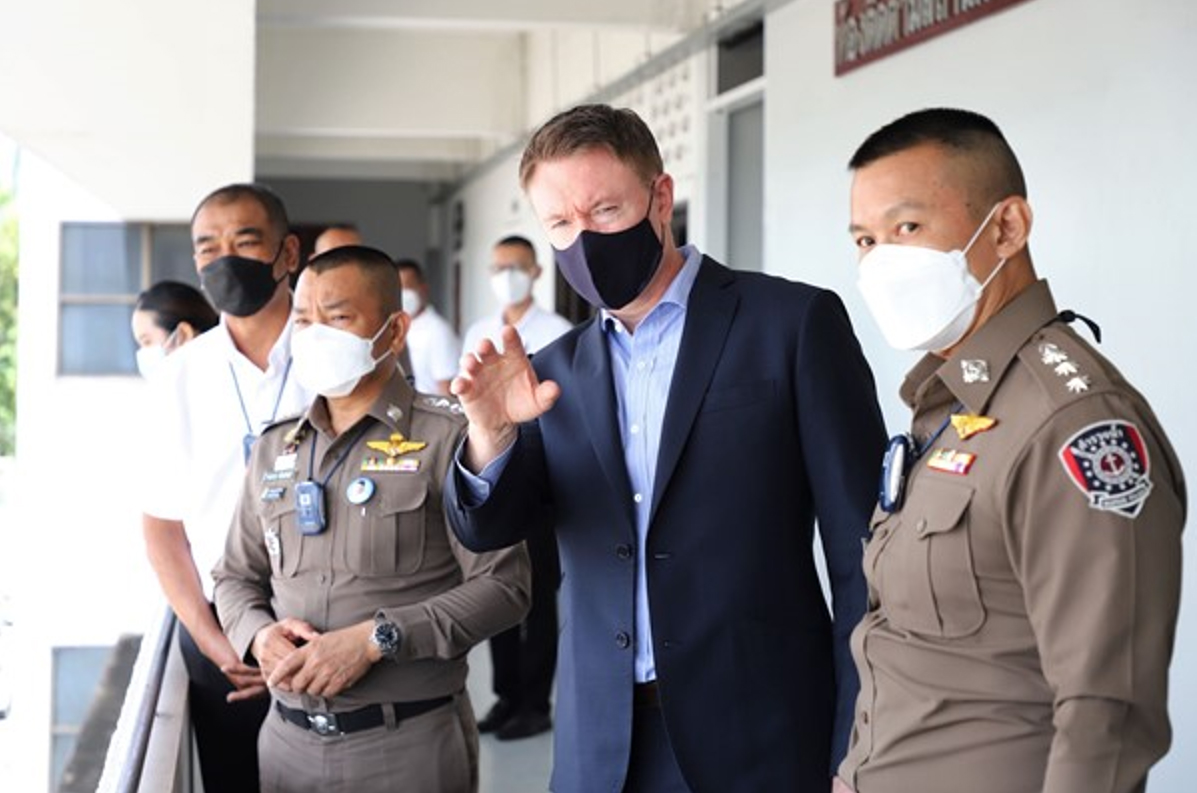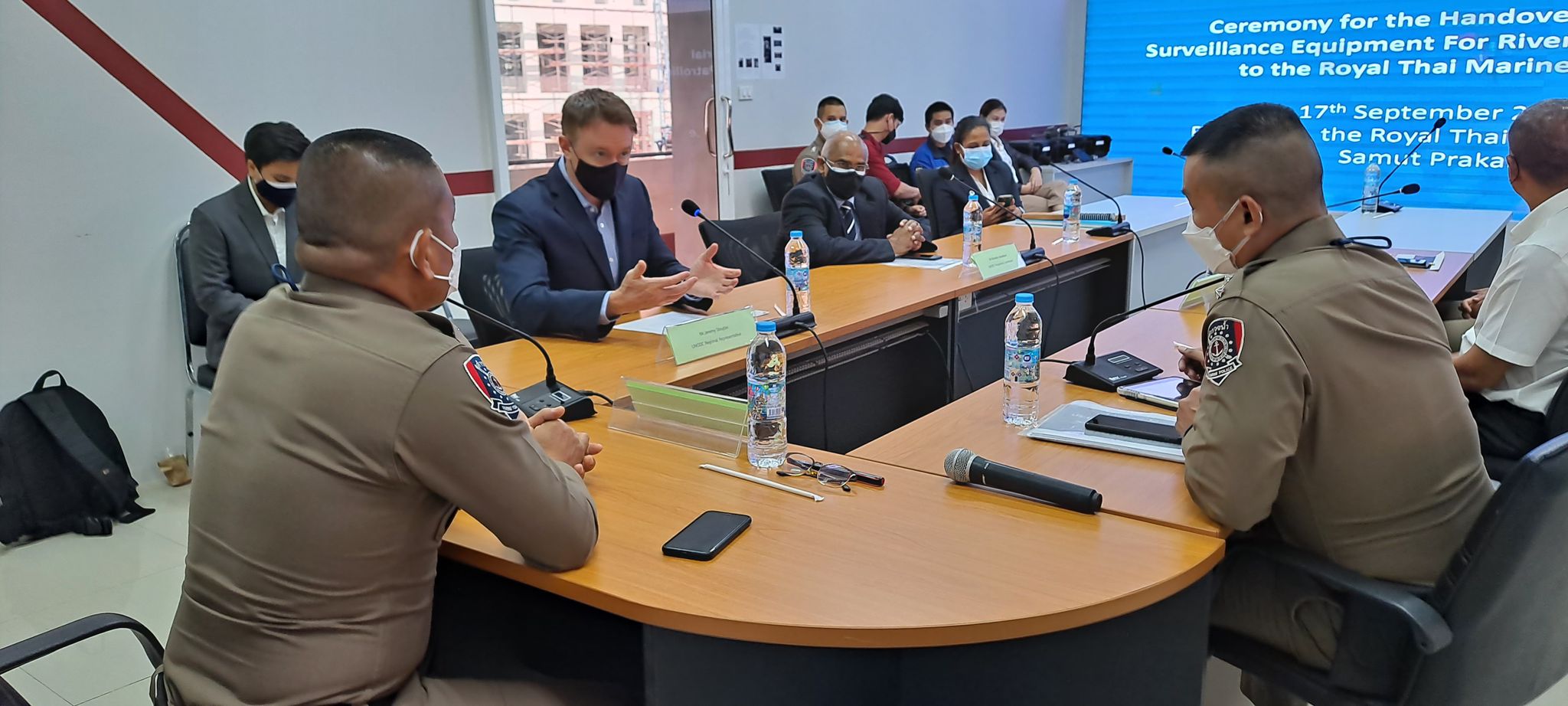
Bangkok (Thailand), 23 September 2021 - The Mekong River in the Golden Triangle where Laos, Myanmar and Thailand come together, and the north-east region of Thailand between Laos and Thailand, have been heavily used for drug trafficking during the COVID-19 pandemic, and maritime law enforcement and security agencies including the Royal Thai Marine Police (RTMP) have sought advice and assistance from UNODC to put in-place advanced technology and training solutions. The UNODC Global Maritime Crime Programme (GMCP) has helped address the situation by providing aerial surveillance equipment to improve reconnaissance efforts of the RTMP to supplement ongoing operations along vulnerable locations of the Mekong River.
The RTMP led by Major General Somkuan Puengsap hosted a meeting with UNODC Regional Representative for Southeast Asia and the Pacific, Jeremy Douglas, to discuss transfer of endurance drone technology equipped with high-resolution and infrared cameras, and to discuss tactical training needs. The technology will enhance riverbank day and night patrols by riverine units in key locations in northern and north-eastern Thailand where intelligence indicates trafficking organizations will be attempting to move shipments of drugs.
Thai enforcement and security agencies have been overwhelmed by increasing volumes methamphetamine and other drugs being trafficked from the Golden Triangle and downstream on the Mekong River across the border with Laos. Fluctuating water levels have also changed the geography of the river and exposed and created sand bars and small islands that lack clear national ownership and legal jurisdiction.
Drone-based camera technology is used globally to address these types of challenges and will significantly assist the RTMP’s operations on the Mekong River, providing the agency with a necessary edge over well-resourced and equipped traffickers.
“Our work on the Mekong has traditionally been built around patrols and operations, supplemented by intelligence exchange with authorities on the other side of the border. The addition of drone technology will allow us to more efficiently deploy teams to hotspots and at the same time increase the effectiveness and safety of operations”, commented RTMP Commander Puengsap.

UNODC Regional Representative Jeremy Douglas remarked, “the volume of methamphetamine and other drugs being trafficked from the Golden Triangle directly or through Laos to Thailand across the Mekong River the past two years is up several hundred percent – and it is really up significantly along the Laos border in 2021. He added, “There are also accidents and humanitarian needs on and along the Mekong, and technology like this will help support important rescue and response operations of the RTMP.”
Shanaka Jayasekara, UNODC Maritime Crime Coordinator in Southeast Asia and the Pacific, highlighted the work of the Forum on Maritime Trafficking Routes – Southeast Asia (MTR-SEA), which brings together drug enforcement and maritime law enforcement agencies at national level and regional levels to improve coordination. In addition to in-depth studies on emerging maritime trafficking routes, the MTR-SEA tracks and reports drug cases at sea and is developing a vessels of interest list (VOI).
Click here to learn more about the UNODC Regional Programme for Southeast Asia and the Pacific
Click here to learn more about the Global Maritime Crime Programme